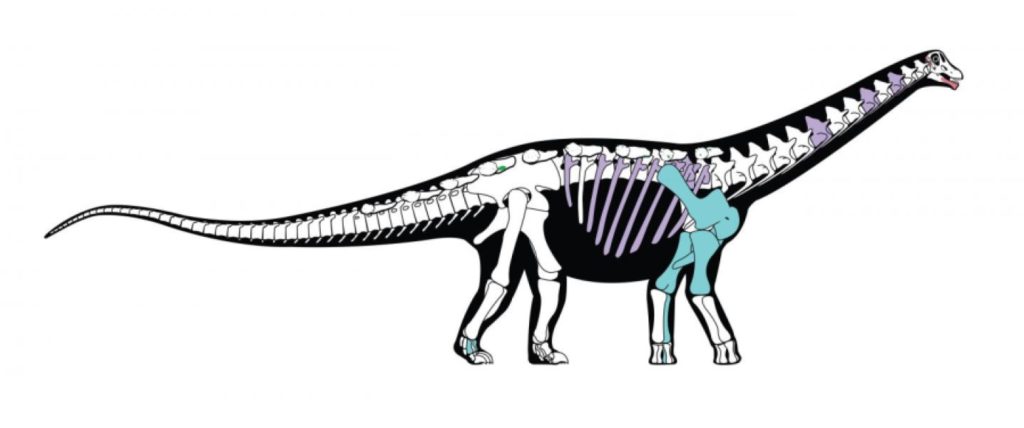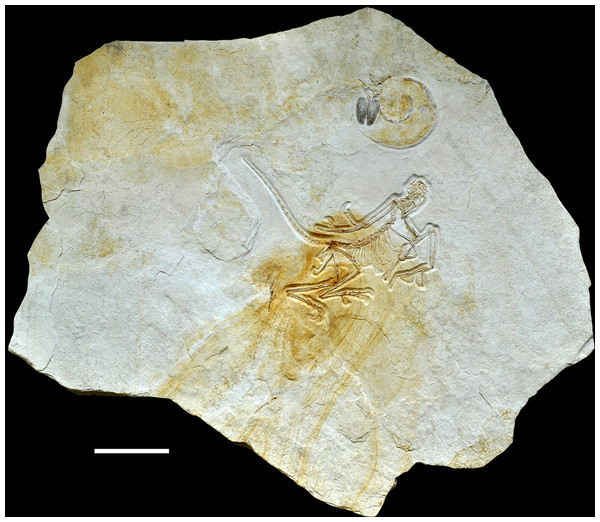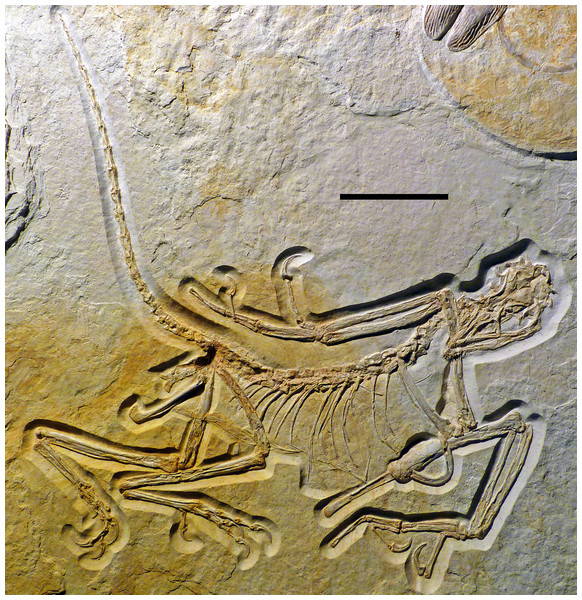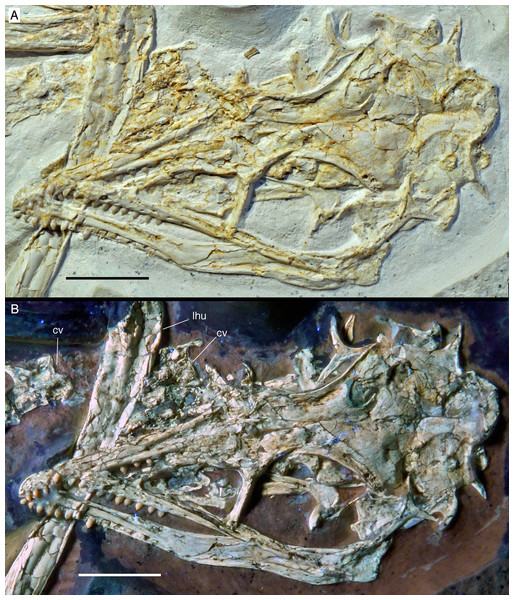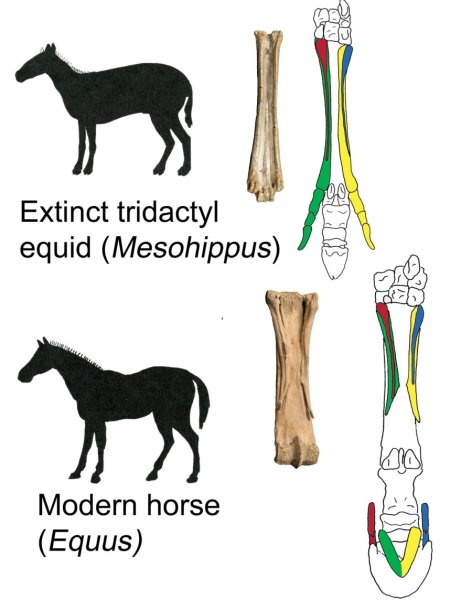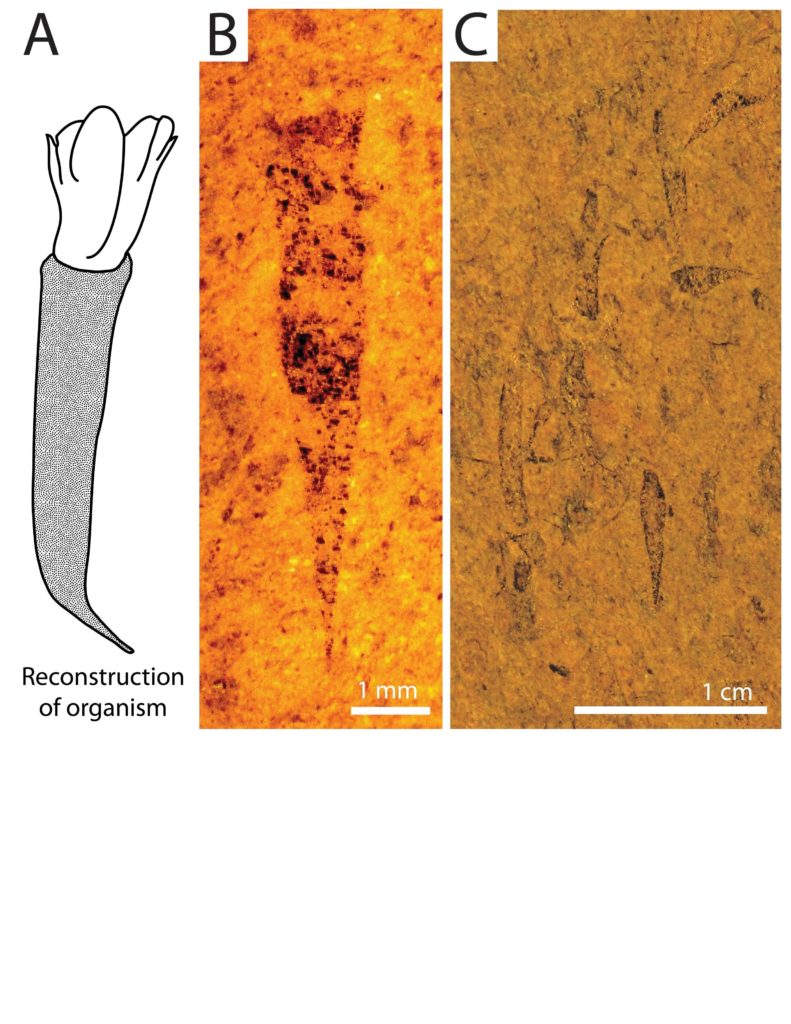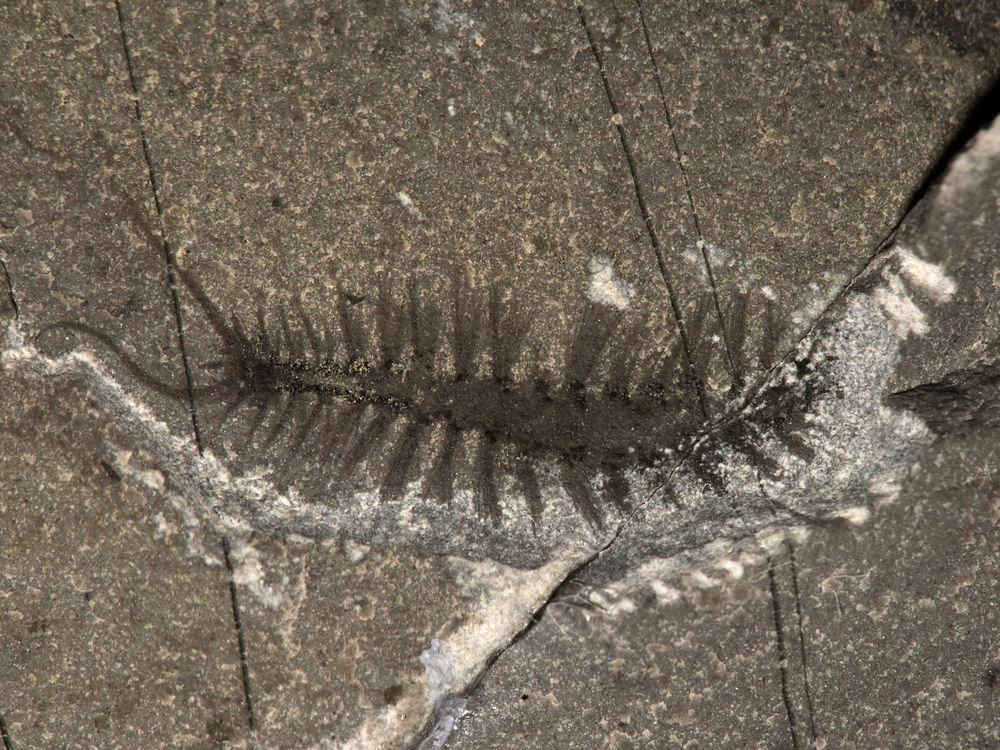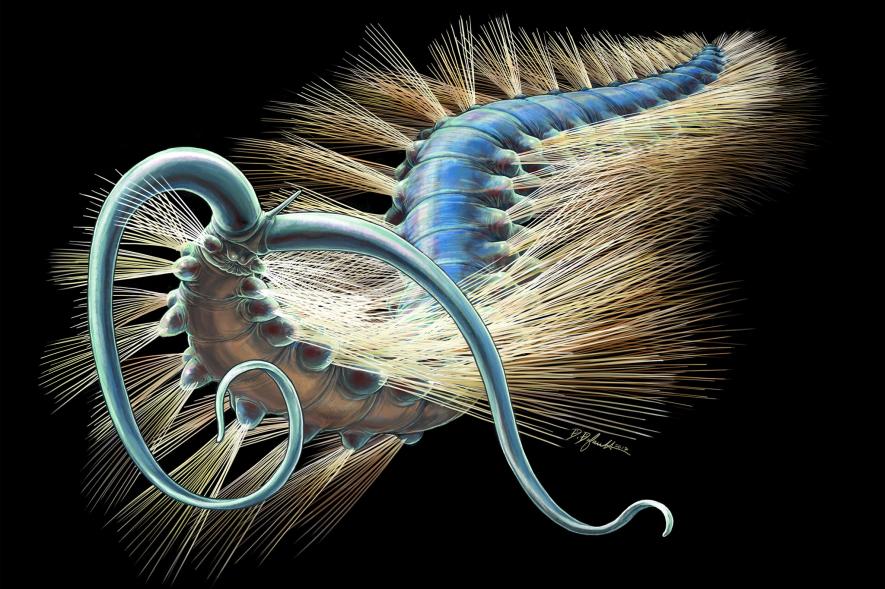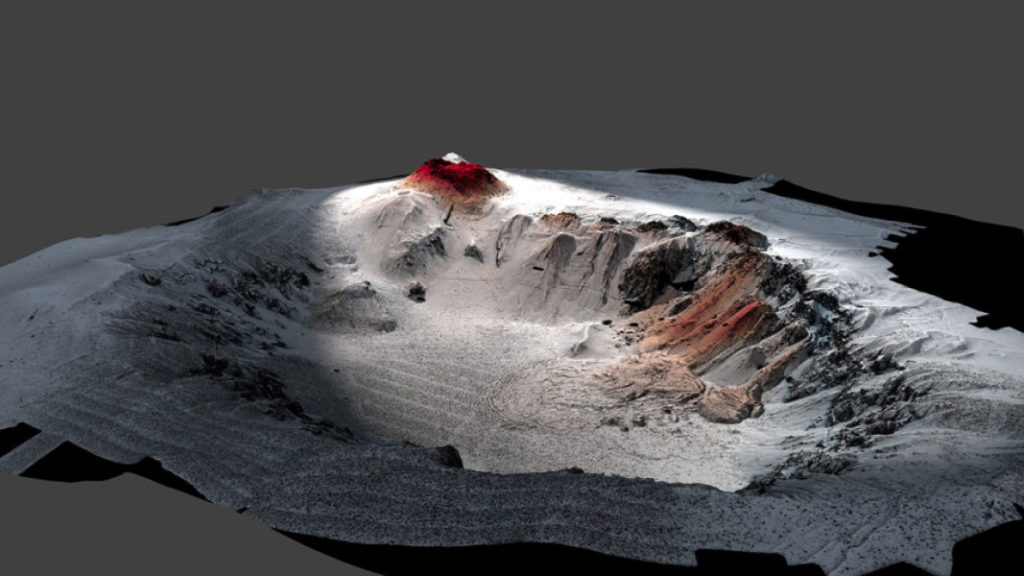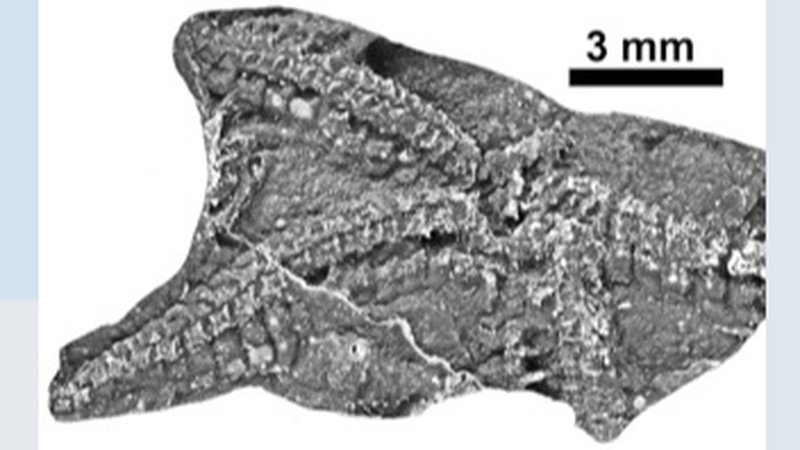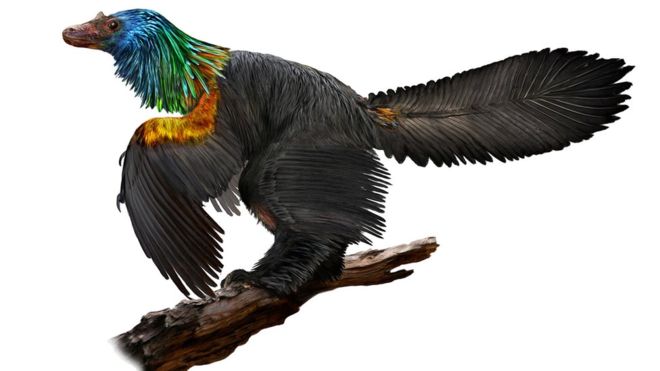@WFS,World Fossil Society,Riffin T Sajeev,Russel T Sajeev
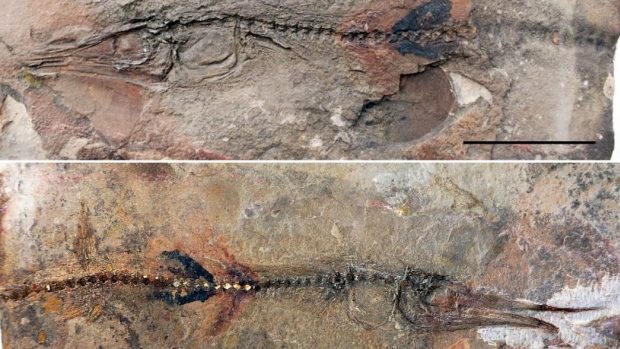
This perfectly-preserved ancient fish fossil was discovered embedded in the flagstones of an old Colombian monastery by a young boy. (Oksana Vernygora)
Edmonton paleontologists are crediting a keen-eyed tourist for spotting a never-before-seen fish fossil in flagstones outside a Colombian monastery.
The perfectly-preserved “lizard fish” specimen is an estimated 90 million years old and has no modern relatives. The extremely rare specimen is the first fossil of its kind to ever be found in South America.
“This fossil was one of those serendipitous, unexpected findings,” said paleontologist Javier Luque, a PhD candidate at the University of Alberta’s biological sciences department and co-author of the research paper on the find.
“It was kind of a once-in-a-lifetime discovery, in many ways.”The discovery was made in 2015 at the Monastery of La Candelaria by a young boy who spotted the outline of a fish in one of the flagstones outside the 17th-century building.
Curious about the strange rock, the boy snapped a photo and shared it with staff at Centro de Investigaciones Paleontologicas, a museum in nearby Ráquira, Boyaca. Workers there recognized it as a fossil right away and shared the discovery with the University of Alberta.
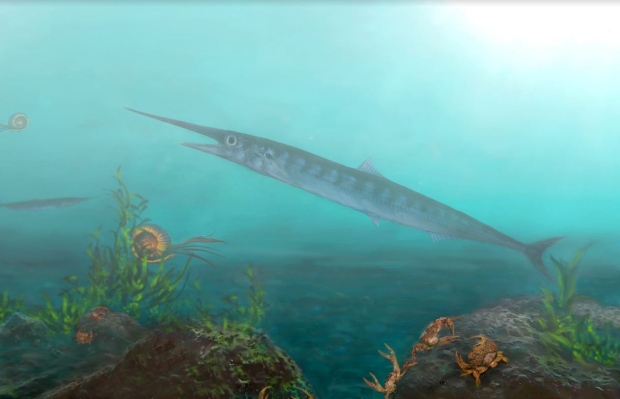
The long-jawed ‘lizard fish’ would have thrived in the oceans that once covered Colombia. (Oksana Vernygora)
The flagstone had been part of the busy pathway for more than 15 years, said Luque.
“A kid was just walking around saw what he thought was a fish and sure enough, he took a photo with the inquiring mind of a child,” Luque said.
“It was a fossil fish, perfectly preserved in two dimensions, just laying down, weathering as people were walking on top of it for so many years.”The museum and the university often partner on fossil finds in the area, said Luque.
After getting the call, a team of U of A researchers joined the local paleontologists in retracing the boy’s steps to locate and lift the stone for further examination.
Researchers were able to trace the origins of the fossil-bearing flagstone to a nearby abandoned quarry from where locals extracted slabs for construction several years ago.
The research paper on the fossil was recently published in the Journal of Systematic Paleontology. It was co-authored by Oksana Vernygora, a fellow PhD candidate at the U of A led the research with assistance from her supervisor, and Allison Murray, a professor of biological sciences.
The rocks date from the Late Cretaceous period, and were deposited at a time when most of the northern Andes was underwater, which accounts for a rich record of marine life in the heart of the Andes mountains.
“It’s an entirely new group of fossil fish from the Cretaceous period in South America,” Luque said.
The fossil is that of a deepwater fish which would have thrived in fast-flowing waters.
It has been named Candelarhynchus padillai, which combines ‘Candelaria,’ the name of the monastery where the fossil was discovered, and the Greek word for nose ‘rhynchos,’ due to its peculiar long and slender needle-like face.
And while the fossil’s backstory has largely been explained, the fish tale has one more mystery.Researchers lost touch with the boy who found the fossil. They have only his name.They are hoping, with the recent publication of the research, the boy might eventually come forward, so they can give him proper credit.
“We certainly will make sure we properly acknowledge this discovery,” Luque said. “It was the keen eye of a young kid that was able to recognize the shape of a fossil that we were not able to see for so many years.
“It gives a beautiful message about keeping curious … and being able to see the world with fresh eyes.”
Source: Article by By Wallis Snowdon, CBC news.
@WFS,World Fossil Society,Riffin T Sajeev,Russel T Sajeev













 February 1st, 2018
February 1st, 2018  Riffin
Riffin 